Long-Term Support Release 10
Every 6 months, Tulip releases a new Long-Term Support (LTS) version of the platform for Enterprise organizations to validate before rolling into production. LTS 10, the latest version of Tulip, introduces new features that improve how teams can centrally manage their applications and data, while ensuring compliance, and accelerating value.
For Tulip customers who are not subscribed to an LTS cycle, these features have rolled out biweekly, in our usual platform releases. See the latest release notes →
Analytics
Analytics Insights
Analytics Insights are new capabilities within the platform that provide more data to users than just visualization. The first Analytics Insights available to users are Layers for charts with time series data. Several layers are now available including:
Forecasts: The Forecast layer in Tulip’s Analytics Builder provides out-of-the-box machine learning to evaluate the data in your analysis and predict a likely future development of that data.
Control Charts: Control Charts can be useful for monitoring values such as a reported length of a unit, to ensure that your production quality is within the acceptable tolerance. Limits can be set manually or automatically with machine learning, and Alerts can be added to Control Charts to notify users when an outlier is detected.
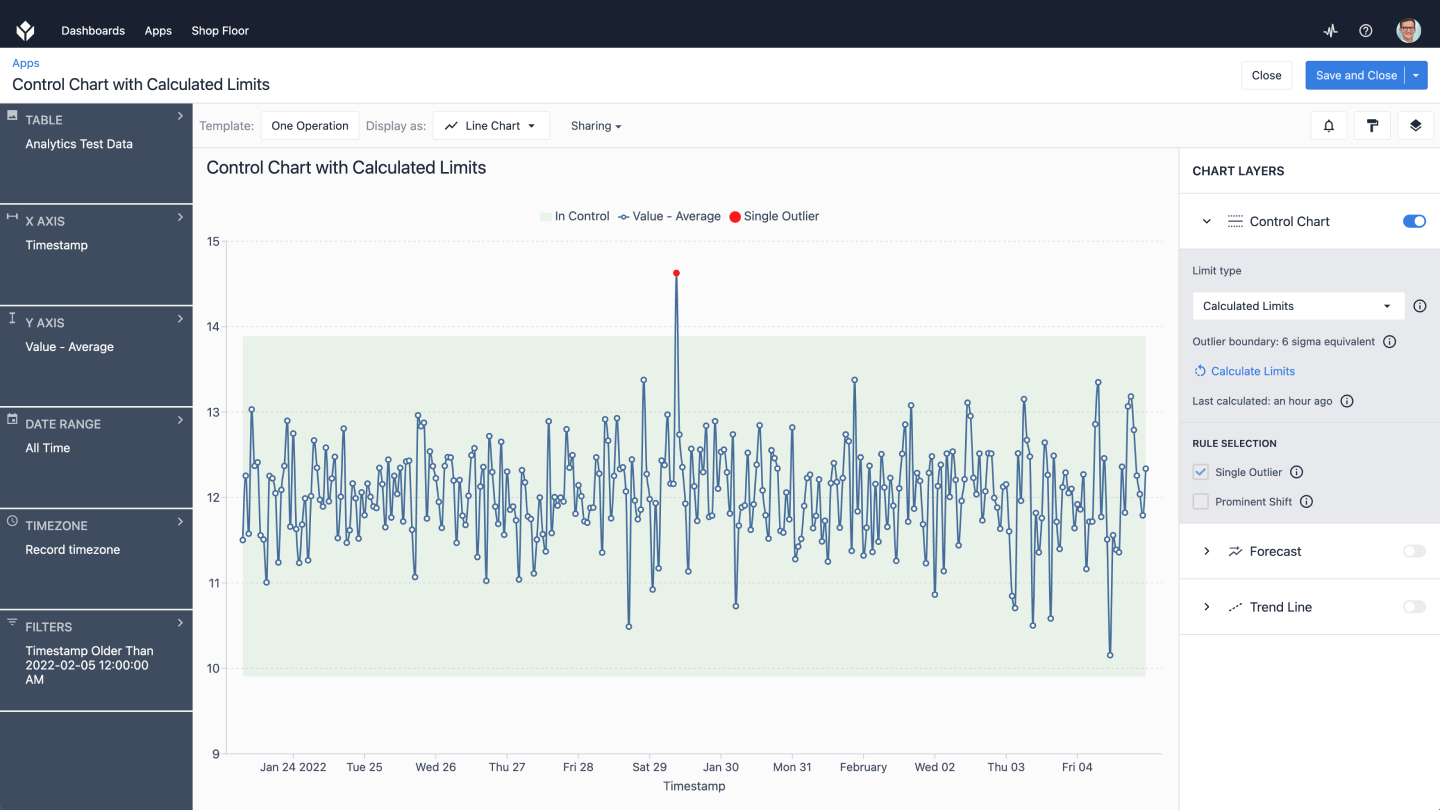
New charting visuals
Analytics has received major enhancements that will help you better analyze data, and create dashboards and charts quicker. Charts have a fresh new look and feel, and you now have more control over how charts can be formatted and configured.
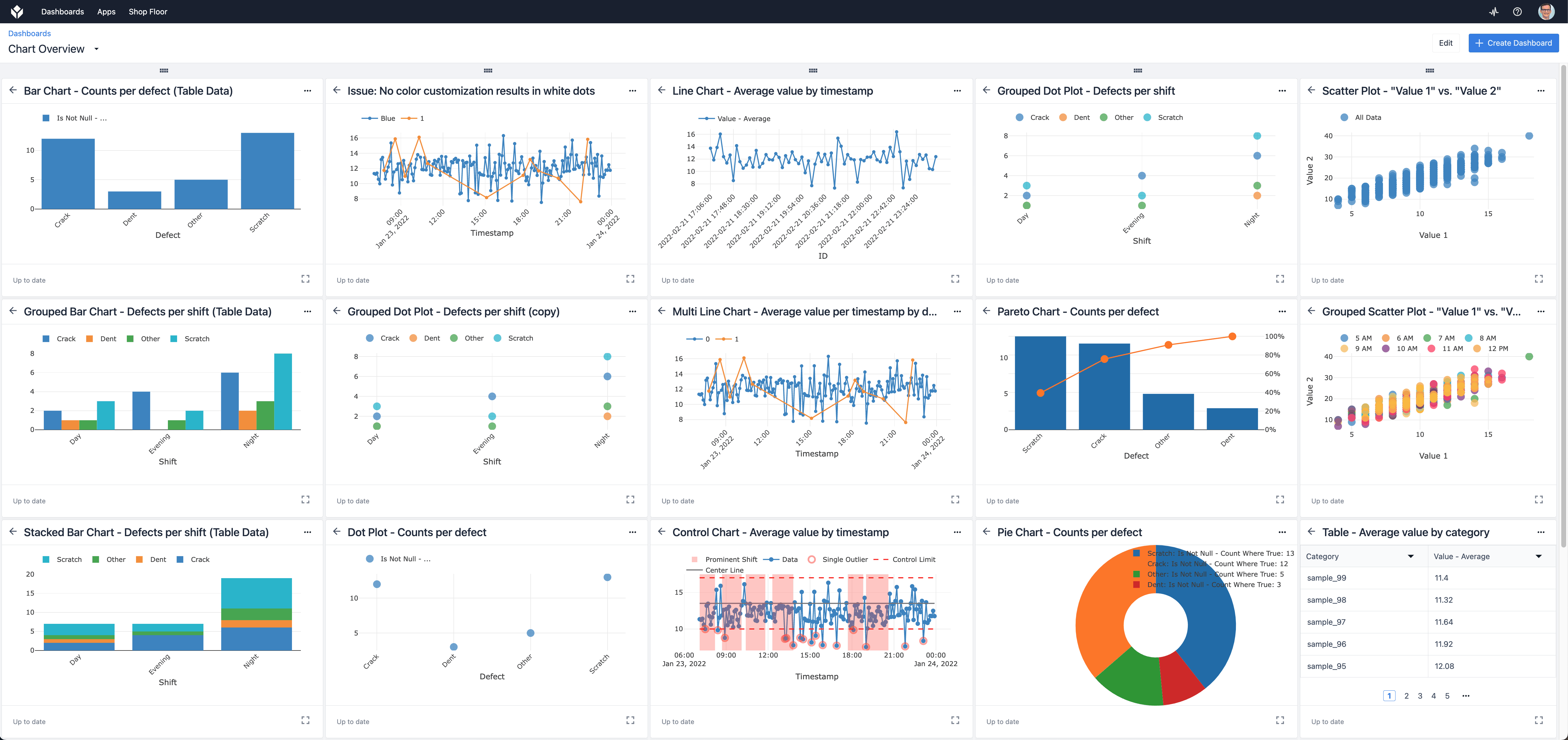
App Editor
Updates to the Tulip App Editor make building intuitive, dynamic user experiences in your apps easier than ever.
App Import/Export: The most recently published version of an app can be exported through the import/export feature. This helps teams with a validation process, and ensures the correct version of an app is moved between instances.
Navigation: As you navigate throughout the platform, you will notice buttons and components now have more tooltips that provide helpful information about their function while hovering over with a cursor. Users can now use arrow keys to quickly move through drop down menu items and use the enter/return key to select.
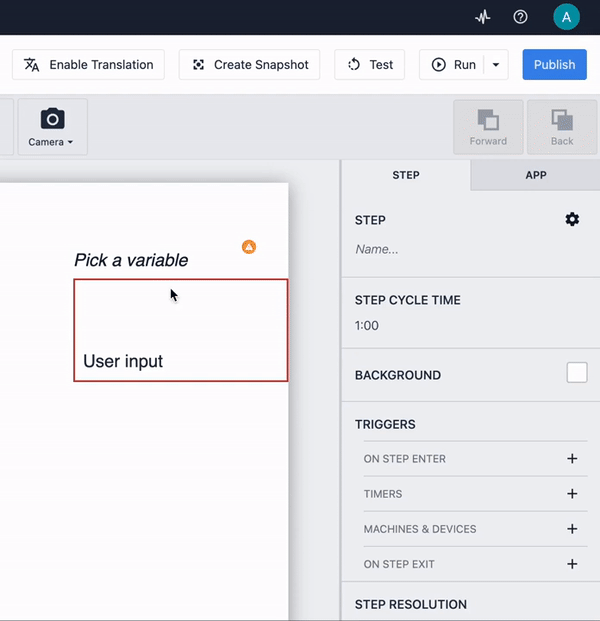
Widgets: There are new styling options for all types of widgets that can be added to apps including colored labels, drop shadows, emoticon buttons, and more. The interactive table widget now has the option to allow operators on the floor to export data from Tulip Tables as a CSV file.

Connectors
For teams that use Workspaces, Connectors can now be separated by Workspace, or shared globally across all Workspaces in an instance. This feature can be enabled by Tulip.
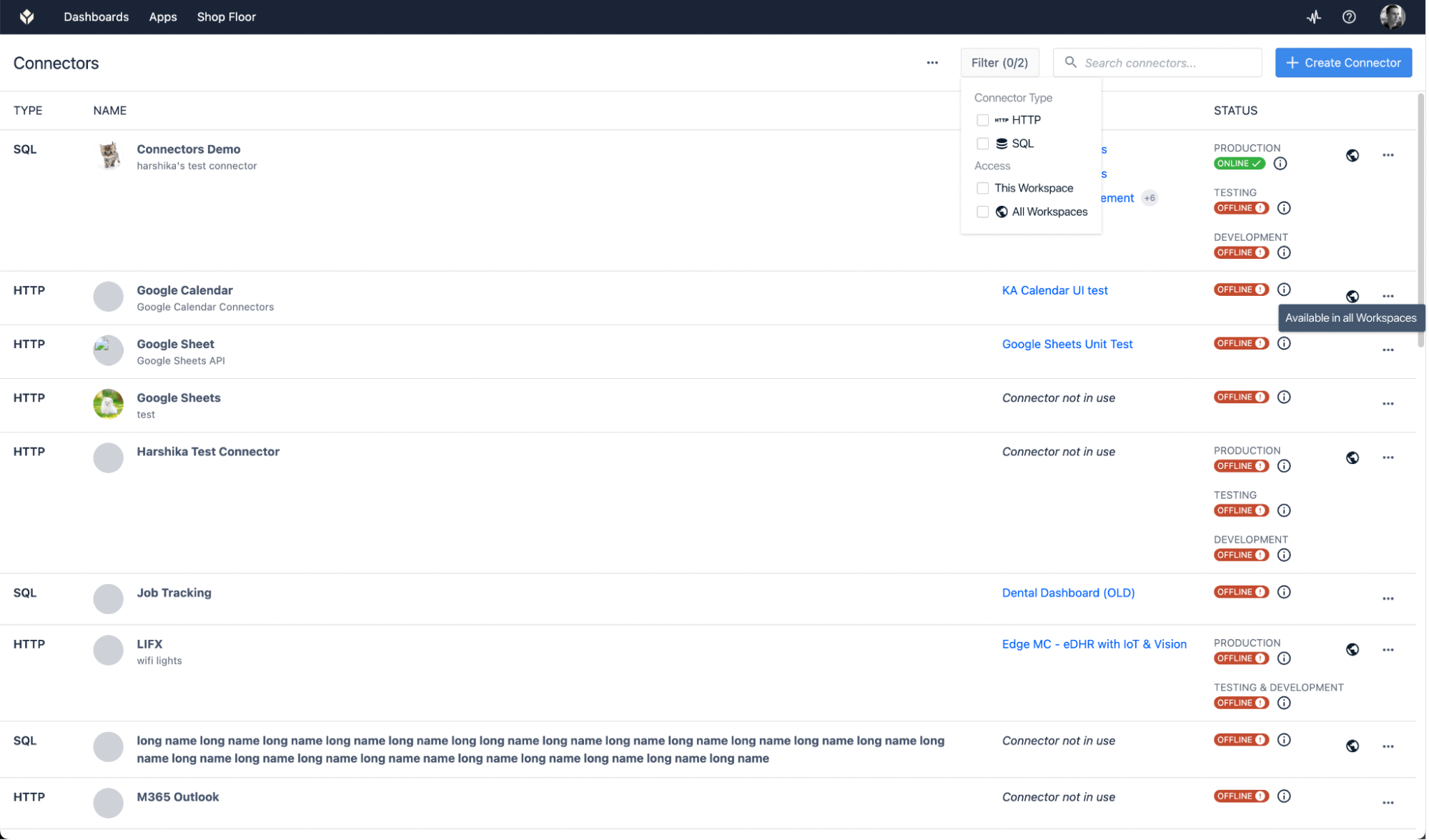
We’ve also added the ability to configure custom encoding for text inputs in connectors. This extends the complexity of queries that can be made with connectors to systems like SAP.
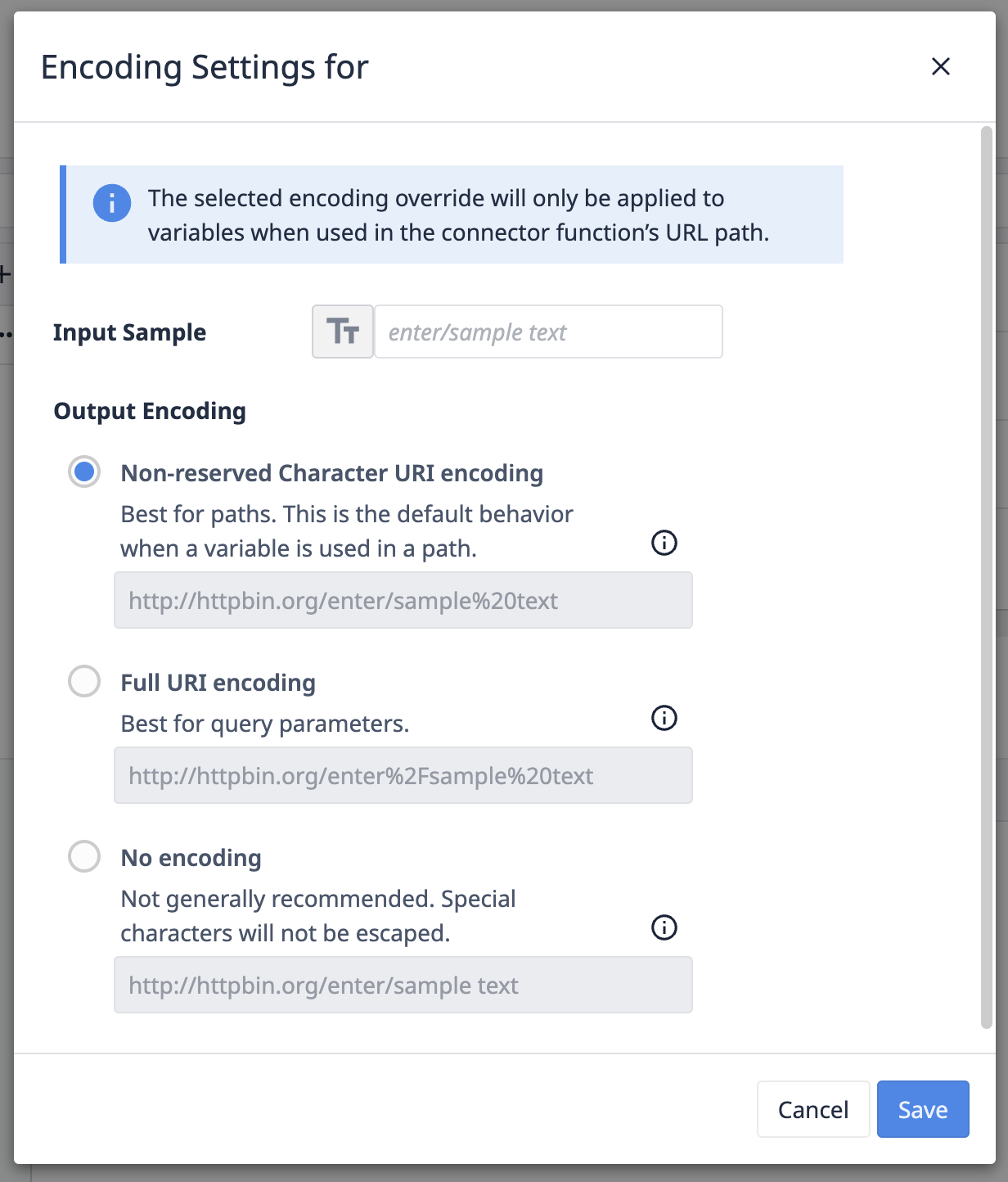
Added uptime visualizations for all connector hosts running in your facility to account settings. This allows you to more closely track the health of your operations critical systems.
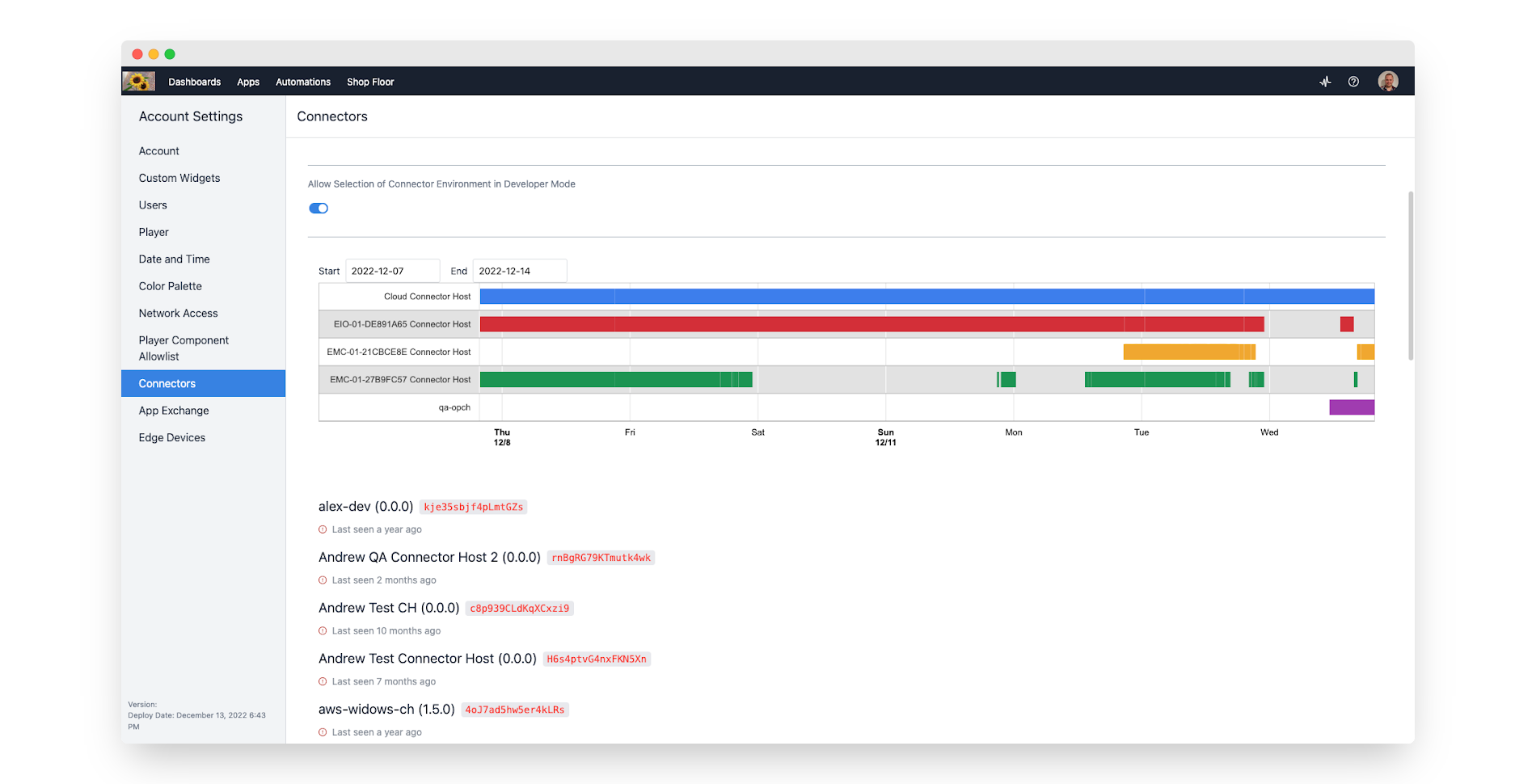
Connectors now support more flexible configuration and the ability to disable the skipConsentPrompt in OAuth setup flows. This lets users interact with an identity provider more easily while authenticating a connection to another system. This feature can be enabled by Tulip.
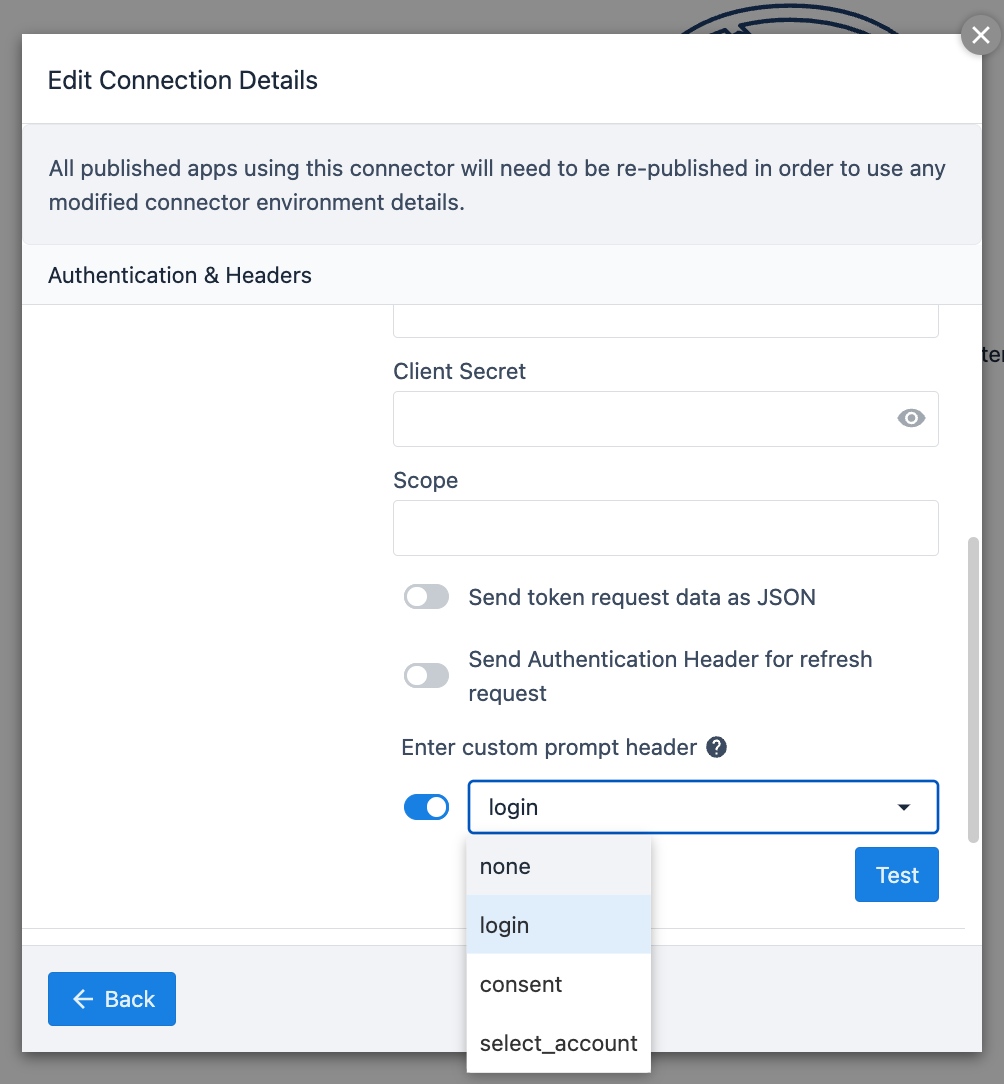
Vision
With Tulip Vision, you can easily integrate computer vision functionality in your apps to guide, measure, and improve your operations.
Camera Configurations: You can now lock and unlock regions to prevent accidental movements and duplicate regions to copy detector settings to a new area.
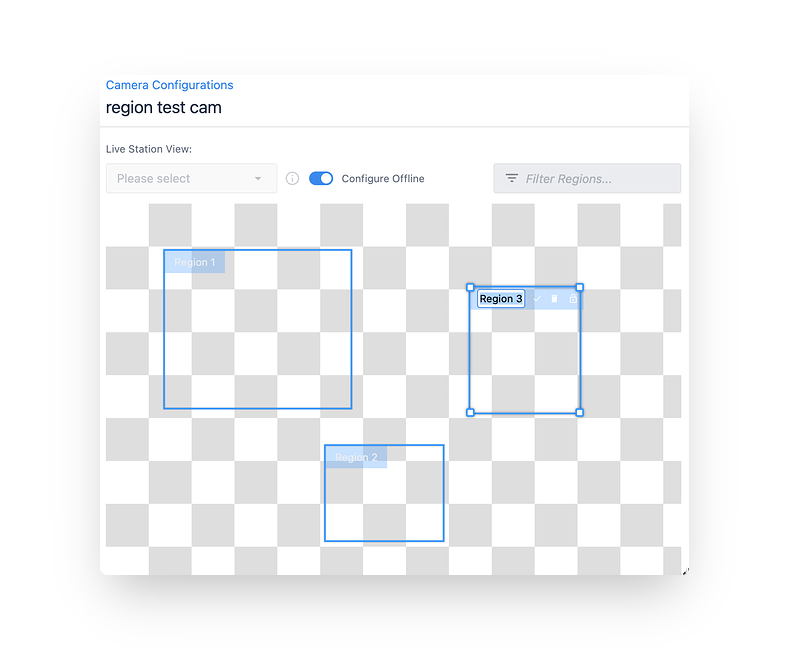
Custom Vision Models: Tulip Vision can now be trained using .ONNX custom vision models to bring machine learning into your workflows. This feature can be enabled by Tulip.
Native Video Recording: You can now use Tulip Vision to capture and upload a video with a unique URL. With variables, the captured videos can be played in apps for operators to rewatch.
Get started with Tulip Vision →
Governance
For teams that use Workspaces, Account Owners can create and manage their own Workspaces on a new Workspaces settings page under Account Settings upon request from the Tulip team.
Workspaces are a feature set in Tulip, allowing organizations to manage users and resources for multiple sites or environments, within a single global Tulip instance. A Workspace is a partition within a Tulip account with its own set of resources like apps, Machines, and Tables, that are independent of other workspaces within an account.
The Enterprise App Exchange feature allows users to create a library of apps within their instance to easily share with other workspaces. You can now track the usage of Enterprise App Exchange templates. See the number of installs, what Workspace in which an app was installed, and when an app was last installed under Account Settings.
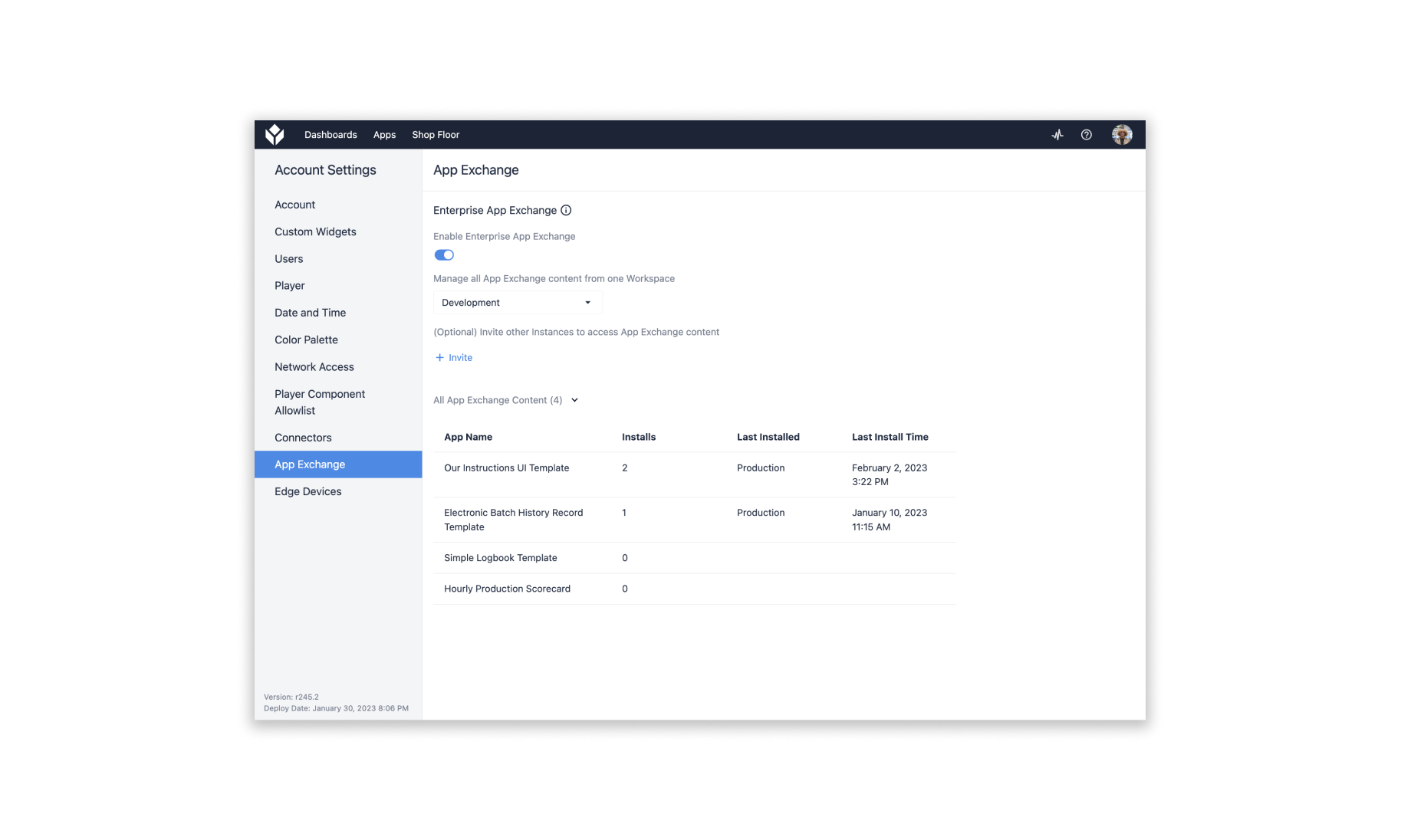
Approval Types now support Default Approvers, who are users that can automatically be assigned as approvers when a new App is created.
How do I learn more about LTS 10?
If your team is interested in seeing all of the latest updates in LTS 10 access the Tulip Docs or reach out to your customer success manager for the official quality assurance report. Your customer success manager can also help you upgrade your instance to LTS 10.
LTS 10 also comes with Tulip Player Version 2.1.2 which brings bug fixes and performance improvements to your interfaces. Restart the Player application to be prompted to upgrade to the latest version.